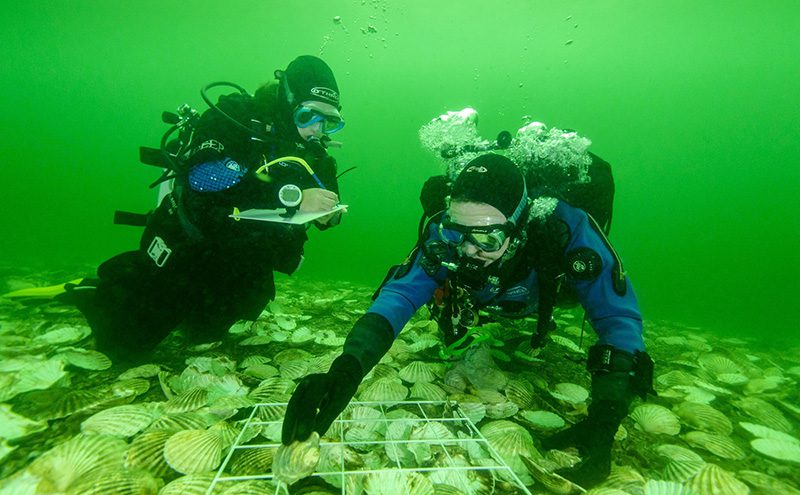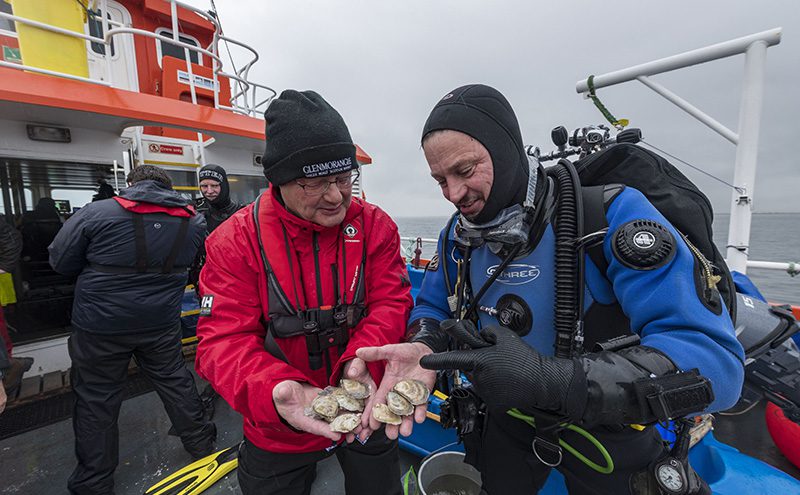
A total of 20,000 oysters are to be introduced into the sea in an area of the Dornoch Firth, in the far north east of Scotland (Highlands and Islands region), as part of a project undertaken by the single malt whisky maker Glenmorangie to restore a species fished to extinction a century ago. The firm says it is pursuing a vision to enhance the marine biodiversity of the area, where it is based.
Last year Glenmorangie and partners placed 300 oysters in the Firth’s protected waters, to confirm the species could survive. Now, for the second phase of the project, they are to recreate entire reefs – seemingly the very first time this has been attempted anywhere in Europe.
“Glenmorangie is dedicated to protecting and improving the beautiful surroundings which have been its home for 175 years,” says a press release from the firm. With this commitment in mind, the company says it forged the Dornoch Environmental Enhancement Project (DEEP), with Heriot-Watt University and the Marine Conservation Society in 2014, to bring oysters back to the Firth. Established reefs in the Firth will increase biodiversity and act in tandem with Glenmorangie’s anaerobic digestion plant, to purify the surrounding seas of their distillation.
Researchers introduced the first 300 native European oysters in 2017. These oysters thrived, paving the way for a feat never before attempted in Europe – recreating natural reefs. From this month, 20,000 oysters will be carefully placed on the first of these reefs, specially created from waste shell, to mimic their natural habitat. The native oysters, all grown in the UK, painstakingly cleaned and checked for disease and unwanted hitchhikers, will be regularly monitored. Based on a successful outcome of this 20,000 oyster trial numbers will be increased to 200,000 over three years. Over five years, the population will be built up to four million, spread over 40 hectares restoring the self-sustaining oyster reefs that existed in the Firth, until they were fished out in the 1800s.
An Independent Research Advisory Panel (IRAP) of leading European Marine scientists has also been created. Led by Professor John Baxter the panel will have oversight of the DEEP project.

Hamish Torrie, Glenmorangie’s CSR Director, said: “We are very excited to move DEEP to its next stage and have been hugely encouraged by the enthusiastic support that our meticulous, research-led approach has received from a wide range of Scottish Government agencies and native oyster growers – it is a truly collaborative effort. We are all very proud that in our 175th year the Distillery has such a pioneering environmental project right on its doorstep.”
Dr Bill Sanderson, Associate Professor of Marine Biodiversity at Heriot-Watt, said: “This is the first time anyone has tried to recreate a natural European oyster habitat in a protected area. Working closely with Glenmorangie, we hope to create an outstanding environment for marine life in the Firth – and act as a driving force behind other oyster regeneration work across Europe.”
Thomas Moradpour, President and CEO of The Glenmorangie Company, said: “DEEP is a vital part of our vision for a fully sustainable business. Supported by Moët Hennessy Louis Vuitton and our partners, we’ll do all we can to champion this innovative project, soon to be showcased at our Open Weekend at The Glenmorangie Distillery.’






